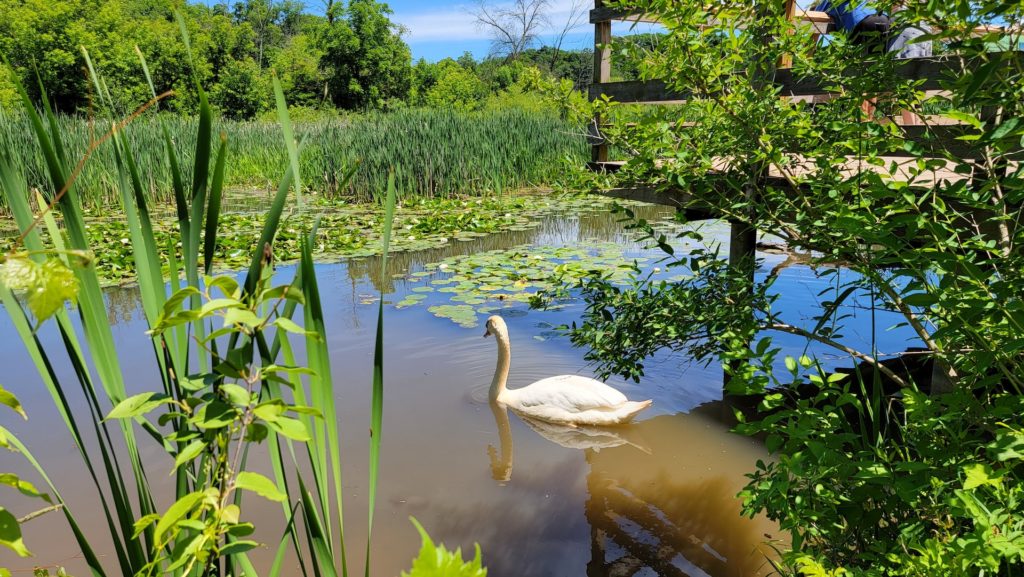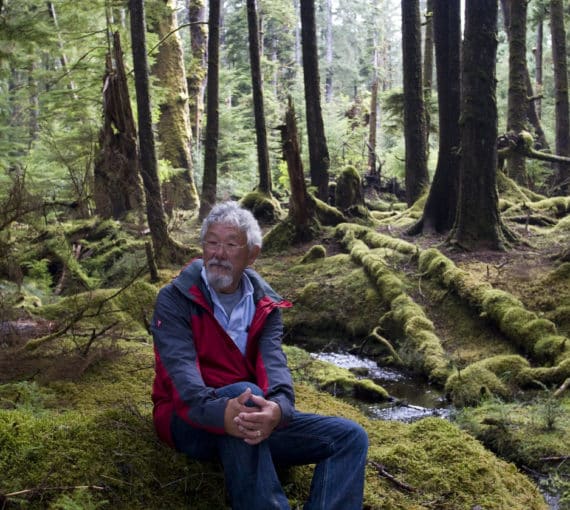
Unless action is taken to reduce the drivers of biodiversity loss — changes in land use (including habitat loss and fragmentation), climate change, exploitation of natural resources, invasive species and pollution — around one million species face extinction, many within decades. (Photo: Divina Clark via Unsplash)
This article was coauthored with Julee Boen, Boreal Partnership Manager at the NATURAL RESOURCES DEFENSE COUNCIL.
The world is at a global biodiversity protection crossroads. Unless action is taken to reduce the drivers of biodiversity loss — changes in land use (including habitat loss and fragmentation), climate change, exploitation of natural resources, invasive species and pollution — around one million species face extinction, many within decades. Despite agreeing to international biodiversity protection goals in Aichi, Japan, in 2010 to conserve at least 17 per cent of lands and inland water by 2020, Canada failed to deliver. Based on recent data, Canada has protected 13.5 per cent.
When the Parties to the Convention on Biological Diversity signed the Global Biodiversity Framework (GBF) in Montreal last December, 196 nations committed to a new and revised set of 23 targets – including everything from reducing pesticide use to eliminating government subsidies that harm biodiversity. It is Target 3, one of the highest profile targets, that aims to conserve at least 30 per cent of the world’s lands and waters by 2030. For Canada, this means more than doubling the amount of land and inland water in protected and conserved areas in just seven years.
When questioned about how Canada would achieve this ambitious target, Prime Minister Justin Trudeau stated that he believes industrial activity, including mining, could be consistent with conservation:
…there could be various levels of protection within vast conserved areas — strong protection for vulnerable watersheds in one area married with responsible mining or commercial hunting in another.
Canadian Prime Minister Justin Trudeau
Could this statement be a signal that Canada is feeling the pressure to accept a revisionist paradigm whereby the desire for short-term economic gains downplays the impacts of industrial development, the very purpose of conservation and the targets that Canada has actually committed to?
While government regulated and privately owned protected areas (e.g., provincial and national parks, land trust properties) are a critical part of achieving the 30 per cent target, many governments, Indigenous Peoples, environmental non-governmental organizations and private-sector interests have agreed that “other effective conservation measures” (OECMs), often called ‘conserved areas’, can also play an important role by complementing regulated protected areas networks.
Identification of OECMs offers an opportunity to “increase recognition and support for de facto effective long-term conservation that is taking place outside currently designated protected areas under a range of governance and management regimes, implemented by a diverse set of actors, including by Indigenous peoples and local communities, the private sector and government agencies” (IUCN Commission Group). However, in the race to meet the quantitative target of 30 per cent, there is real risk that nations are not paying enough attention to the fact that the biodiversity represented by these areas and the effectiveness of their protection matter as much as the amount of area covered. As a result, misinformed or disingenuous interpretations of OECMs may focus on designating areas that have the lowest opportunity cost for humans even when they also have low or negligible biodiversity benefits.
The Government of Canada and provincial and territorial governments have agreed on specific criteria that must be met for OECMs, which are complementary and consistent with the international standards defined by the International Union for Conservation of Nature.
Criteria
In order for an area to be recognized as an OECM, it must meet specific criteria, including:
- the area has defined boundaries–you can point to it on a map
- governing authorities are able to control activities within the boundaries
- governing authorities have the obligation to perform activities that lead to conservation in the area and restrict activities that are incompatible with conservation
- Conservation is year round and will be maintained in the long term
- site goals will lead to conservation and biodiversity
- conservation objectives are not threatened by other site objectives
- governing authorities follow the management plan that is creating positive biodiversity outcomes, and no governing authorities threaten onsite conservation
What are the agreed-upon criteria for an area to be considered an OECM?
Clearly defined boundaries
For an area to meet the criteria as an OECM it must have defined boundaries. By definition, the boundary has a purpose: it bounds the activities that can take place within the area and excludes others. Some industrial development activities use dynamic boundaries to implement management strategies intended to mitigate their impacts on biodiversity (e.g., identifying a bird’s nest and avoiding logging within 100 metres during the breeding season of that year). Management strategies that move around the landscape are inconsistent with area-based boundaries in the context of OECMs and Target 3, as the size and location of dynamic areas can change over time, possibly significantly and frequently.
Effective means to control all activities likely to impact biodiversity and deliver positive biodiversity outcomes
Governing authorities — governments, organizations, corporations or individuals responsible for managing an area — must be able to control all activities that are likely to impact biodiversity within OECM boundaries. Even though biodiversity conservation may not be the primary management objective in an OECM, the use and management of any service or value must not negatively impact the value of biodiversity conservation. They have an obligation to restrict activities that are incompatible with conservation, and must have the authority to do so.
The Secretariat of the Convention on Biological Diversity’s June 2022 science brief on Target 3 is clear about activities that are incompatible with conservation, “Commercial, intensive, and large-scale exploitation (in agriculture, fishing, forestry, or other sectors) that are managed sustainably with some biodiversity conservation outcomes are not compatible with Target 3, but are covered under Target 10, on sustainable management of production land and waterscapes.”
There are hundreds of potential OECMs that have been identified across Canada. For these areas to effectively conserve biodiversity, and therefore contribute to the 30×30 protected and conserved areas goal, governments must ensure that all governing authorities that could potentially affect the biodiversity values of these areas apply the laws and policies at their disposal to ensure these areas are not open to “commercial, intensive, and large-scale exploitation”.
Long-term and year-round protection
Both the Canadian and international criteria are clear that for these conservation efforts to be effective they cannot be reversed easily and must sustain biodiversity outcomes over the long term. It’s challenging to reconcile this with industrial guidelines for site-specific conservation, as guidelines, unlike laws, are subject to change. For example, an area that is only set-aside in a 10-year forest management plan would be insufficient to meet the OECM criteria. To ensure this long-term commitment to biodiversity conservation areas must, for example, also be removed from the calculation of the management unit’s wood supply and withdrawn from mineral staking.
Summary
Attempts to shoehorn industrial activities into an international conservation framework will put Canada’s reputation at risk. There are 23 GBF targets intended to support the protection of biodiversity, including a target related to responsible, sustainable use of natural resources. As nations implement the GBF targets, it will be increasingly important to report protected areas and OECMs against their appropriate target, and sustainable management measures against theirs. We highly encourage all industries to put an end to practices that have exacerbated biodiversity loss, as well, to put forward potential OECMs, if they meet the criteria.
Canada is also deciding on how OECMs should work in ocean environments; for more on the challenges and opportunities in the ocean see here and here.
Our work
Always grounded in sound evidence, the David Suzuki Foundation empowers people to take action in their communities on the environmental challenges we collectively face.






